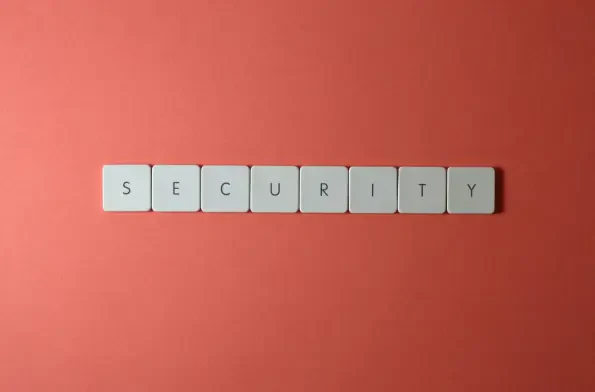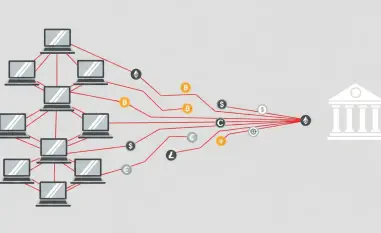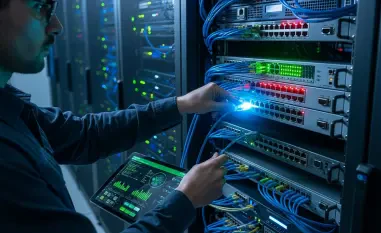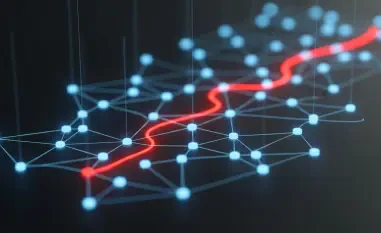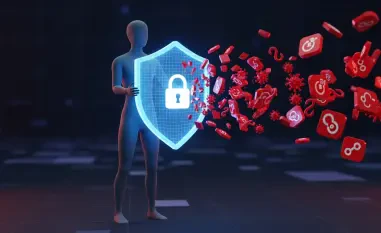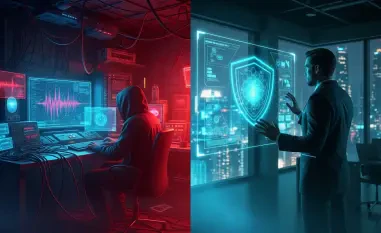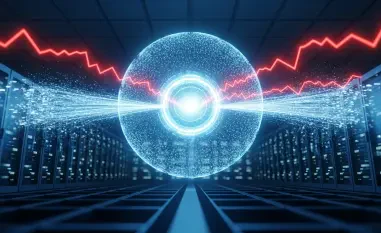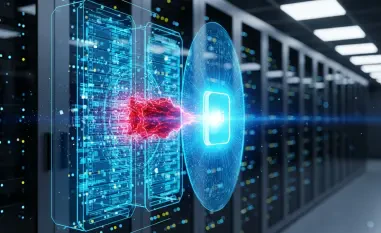In an era where cyber threats evolve at breakneck speed, a critical vulnerability in Fortra’s GoAnywhere MFT software, identified as CVE-2025-10035, has sent shockwaves through the cybersecurity community, prompting urgent action and analysis. Discovered on September 11 of this year, this severe deserialization flaw exposed systems with admin consoles accessible via the internet to potential exploitation, with threat actors like Storm-1175 deploying Medusa ransomware in confirmed attacks. This roundup gathers diverse perspectives from industry experts, analysts, and affected organizations to dissect Fortra’s response, evaluate the effectiveness of their mitigation efforts, and uncover actionable lessons for businesses navigating similar risks. The aim is to provide a comprehensive view of this incident and equip readers with practical insights to bolster their defenses.
Unpacking the Crisis: Background and Diverse Opinions
The discovery of CVE-2025-10035 marked a pivotal moment for users of Fortra’s managed file transfer solution, as customer reports of suspicious activity triggered an urgent investigation on the day of identification. Many cybersecurity analysts have emphasized the gravity of this flaw, particularly for systems with exposed admin consoles, noting that such configurations are akin to leaving a digital front door unlocked. Opinions vary on the initial impact, with some industry voices praising the rapid identification process, while others argue that the vulnerability’s exploitation by ransomware groups highlights systemic issues in software exposure.
Differing views also emerge on the real-world consequences of this incident. Certain threat intelligence firms have pointed out that the involvement of sophisticated actors like Storm-1175 underscores a growing trend of targeting MFT systems for high-impact attacks. Conversely, a segment of IT professionals believes that the limited number of confirmed unauthorized activities suggests that the damage was contained early. This divergence sets the stage for a deeper look into how Fortra addressed the crisis and what experts think could have been done differently.
Fortra’s Multi-Pronged Reaction: Expert Analysis and Critiques
Swift Action: Evaluating Detection to Hotfix Rollout
Fortra’s immediate response on September 11 involved notifying on-premises customers with exposed admin consoles and alerting law enforcement, a move that many in the security sector have lauded as proactive. Within 24 hours, a hotfix was rolled out for affected versions (7.6.x, 7.7.x, 7.8.x), followed by fully patched updates (7.6.3 and 7.8.4) by September 15. Industry observers have highlighted this rapid deployment as a benchmark for vendor responsiveness, with some noting that the speed likely minimized widespread exploitation.
However, not all feedback is unanimously positive. A portion of cybersecurity consultants argues that the pace of public disclosure could have been accelerated to warn users sooner, potentially curbing early attacks. Additionally, challenges in ensuring universal patch adoption have been flagged, as some organizations reportedly delayed updates due to internal testing protocols, raising questions about the balance between speed and thorough communication.
A contrasting perspective from managed service providers suggests that Fortra’s timeline was realistic given the complexity of software ecosystems. They stress that the responsibility also lies with end-users to prioritize patch management, indicating a shared accountability model. This spectrum of opinions reveals both strengths and gaps in the initial reaction strategy.
Scope and Impact: Assessing the Vulnerability’s Reach
The technical nature of CVE-2025-10035, identified as a deserialization flaw in the License Servlet allowing unauthenticated command injection, has been a focal point for tech analysts. Experts agree that the risk was confined to internet-exposed admin consoles, sparing other components of the software. Some security researchers commend Fortra for clearly defining this scope, which helped organizations assess their exposure more accurately.
On the flip side, reports of Storm-1175 exploiting the flaw to deploy Medusa ransomware have alarmed many in the field, with threat intelligence teams warning that delayed mitigation amplified damage in affected systems. A differing viewpoint from smaller IT firms suggests that the low number of confirmed incidents might reflect effective early warnings rather than underreporting, though they caution against complacency.
Another angle comes from compliance officers who note that even limited exploitation can have outsized regulatory and reputational consequences. They argue that the incident underscores the need for robust risk profiling beyond just technical boundaries. These varied takes highlight the multifaceted impact of such vulnerabilities on diverse stakeholders.
Lingering Mysteries: Debating Attacker Access Methods
A significant point of contention among cybersecurity professionals is how attackers gained or bypassed the private keys required for exploiting this flaw. Many in the research community express concern that this unresolved issue points to either advanced attack techniques or potential lapses in cryptographic safeguards. This uncertainty has sparked debates on whether software vendors need to rethink key management practices.
Some industry analysts draw parallels to broader trends of targeting MFT systems, suggesting that this incident may indicate emerging attack vectors that exploit overlooked security layers. Others, particularly from incident response teams, propose that insider threats or social engineering could play a role, urging a deeper investigation into human factors alongside technical fixes.
A third perspective from software development circles challenges the notion that patches alone can address such mysteries. They advocate for comprehensive audits of access mechanisms and attacker methodologies to prevent future breaches. This diversity of thought emphasizes that the path to resolution extends beyond immediate fixes to systemic inquiry.
Fortra’s Mitigation Blueprint: Reviewing Defense Strategies
Fortra’s guidance to restrict admin console access, enhance monitoring, and prioritize updates has been generally well-received as practical and actionable. Cybersecurity trainers often cite these steps as aligning with industry best practices, especially when compared to responses to past MFT software exploits. They view Fortra’s approach as a solid foundation for mitigating similar risks.
Yet, some critical voices from penetration testing groups argue that more proactive measures, such as mandatory access controls or advanced encryption protocols, should be integrated into default configurations. They believe that relying on user diligence for mitigation leaves room for error, particularly in high-stakes environments.
A balanced opinion from IT governance experts suggests that Fortra’s blueprint, while effective for now, could evolve with predictive threat modeling to anticipate future vulnerabilities. They encourage vendors to lead with innovation in defense mechanisms to rebuild and sustain user trust. These insights collectively point to a need for both immediate action and long-term strategy.
Key Insights and Practical Takeaways: A Synthesis of Views
Fortra’s structured response, characterized by rapid hotfix deployment and transparent communication, has garnered significant approval from many cybersecurity stakeholders, though the persistent threat of actors like Storm-1175 remains a concern. Analysts across the board agree that the incident highlights the critical importance of timely vendor-user collaboration in addressing exploits. This consensus forms a core lesson for organizations navigating software vulnerabilities.
For users of GoAnywhere MFT, practical advice from IT security forums includes auditing admin console exposure to eliminate unnecessary internet access points. Real-time monitoring tools are frequently recommended by system administrators to detect anomalies early, while patch management protocols are seen as non-negotiable by compliance experts. These tips reflect a collective push for actionable safeguards.
Broader takeaways from various sources also stress fostering a culture of proactive cybersecurity within teams. Risk assessments tailored to specific environments are often cited as essential by consultants, alongside regular training to keep staff updated on emerging threats. This blend of technical and organizational strategies offers a roadmap for resilience against similar incidents.
Reflecting on the Incident: Lessons Learned and Next Steps
Looking back, Fortra’s handling of CVE-2025-10035 stood out for its urgency and clarity, as numerous experts acknowledged the company’s commitment to customer protection through swift updates and warnings. The exploitation by sophisticated threat actors, however, served as a grim reminder of the relentless nature of cyber adversaries during this period. Diverse opinions from the industry painted a picture of both progress and persistent challenges in securing critical software.
Moving forward, businesses were encouraged to prioritize vulnerability management by establishing rigorous patch schedules and access restrictions as immediate next steps. Collaboration with vendors like Fortra to develop adaptive security measures became a focal point for many analysts. Additionally, investing in threat intelligence sharing emerged as a vital strategy to anticipate and counter evolving attack methods, ensuring that the lessons from this incident translated into stronger defenses for all.
